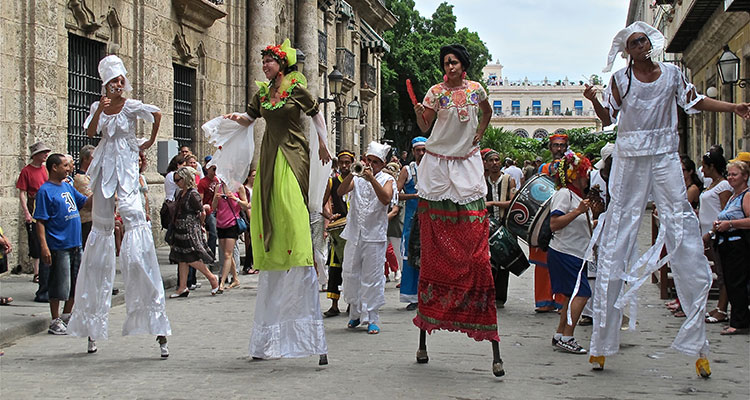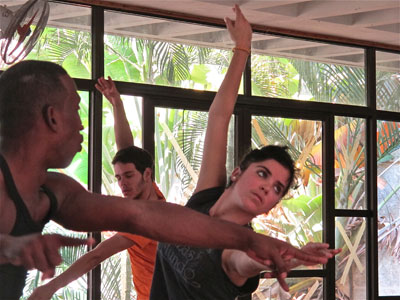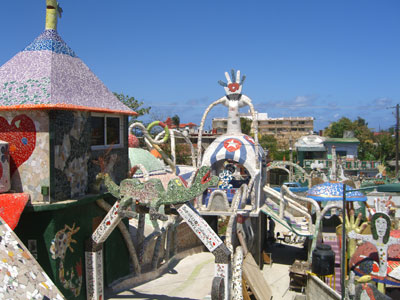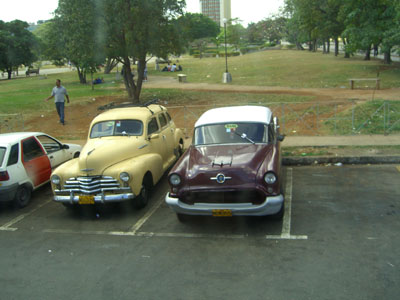Connecting with Cuba through dance
This article appears on page 20 of the February 2013 issue.
by Louise Bickman, Boulder, CO
Like many US citizens, I was clueless about the possibility of legally visiting Cuba. I was fortunate, then, when attending a performance of Danza Contemporánea de Cuba at The Joyce Theater in New York City in May 2011, to learn that The Joyce (212/691-9740, www.joyce.org/about/travel.php), which specializes in modern dance and had invested over 10 years of diplomacy to arrange for a New York performance by this company, organizes tours to Cuba in conjunction with the Bringing Hope Foundation.
It seemed to me, given the dedication of The Joyce staff in arranging these performances, that this tour would be a great choice because of both their knowledge of dance and the personal connections they had developed over those 10 years. I wouldn’t know until later how right my assumption would turn out to be.
Cuba travel
My husband, Marty, and I joined a March 2012 trip to Havana, Cienfuegos and Trinidad de Cuba offered by The Joyce Theater and Bringing Hope that was both a cultural tour and a humanitarian mission to deliver medical supplies, which allowed us to meet the criteria for legally visiting Cuba. (Basic information on travel to Cuba can be found on the United States Treasury website.)
The cost for the 8-day trip was $4,550 per person, double occupancy, which included a required tax-deductible donation of $1,000 per person to The Joyce Theater Foundation to support the arts of dance and choreography. The tour price covered all lodging, meals (except one independent meal) and expenses, excluding souvenirs and tips.
In Randy Keck’s “Far Horizons” column, his May-July 2010 3-part series provided practical information on traveling to Cuba, though he traveled with a Canadian tour group. Given that we were traveling with a US-based organization, we had additional considerations.
First, our tour was primarily a humanitarian mission. Bringing Hope, the organization that made our legal arrangements and was familiar with the situation in Cuba, asked us each to bring 10 to 15 pounds of medical and school supplies, even though there was a 50-pound-per-person weight limit (including carry-ons) on our chartered flight.
It was also important for us to know that neither credit cards nor travelers’ checks issued by US banks would be honored in Cuba, so we carried only cash. US dollars were discounted 13% when exchanged for Cuban convertible pesos (abbreviated as CUC and pronounced by our guide as “kooks”).
Finally, we had to plan for being somewhat out of touch with home. We were told both by the tour organizers and AT&T that our cell phones wouldn't work in Cuba (though some models might). Also, Internet access was spotty.
Once we were in Cuba, Marty and I were happy that we had prepared for our visit by reading historical and cultural materials. Books that were mentioned repeatedly among our tour members included Alma Guillermoprieto’s “Dancing with Cuba,” Ruth Behar’s “An Island Called Home,” Carlos Eire’s “Waiting for Snow in Havana,” and T.J. English’s “Havana Nocturne: How the Mob Owned Cuba and Then Lost It to the Revolution.”
Accommodations
Our official Cuban guide, Vivian Quintero Triana, was articulate, knowledgeable, friendly and kind, and when we parted at the end of the trip, I felt as though I had lost a dear cousin.
Also accompanying us were Richard Ablon and Larissa Miele of The Joyce Theater Foundation, who made sure that our arrangements in Cuba were, at least, as advertised and, often, better. Both Richard and Larissa were knowledgeable and insightful about Cuba and Cuban culture.
In Havana we stayed at the 5-star Hotel Parque Central, a refurbished building owned by Cuba in partnership with the Spanish company Iberostar. The hotel, run flawlessly, was well situated next to Havana’s Central Park and near Old Havana. Our room was clean and well appointed, and the staff was unfailingly friendly and helpful.
An abundant breakfast buffet that reminded me of those in the best hotels in Europe was included. Each morning we chose among items such as croissants, bagels, fruit, omelets, cold meats and fish.
We spent two nights at a similar hotel in Trinidad de Cuba, the Iberostar Grand Hotel Trinidad de Cuba. When in our hotels, it was hard to remember we were in a developing country.
I am often asked about the quality of the food in Cuba. It was our sense that the best food is saved for tourists. Mostly, we ate in government-run restaurants, where we were served what was available. This included beef, fish and chicken. We knew we were privileged when we were offered meat, since our reading material had told us that Cuban citizens are generally not permitted to eat beef.
The Joyce staff had warned us that “food is not a highlight of traveling to Cuba.”
Life in Cuba
Our time in Havana was organized around our humanitarian mission and around educating us about Cuban history, architecture, art, government and dance. We heard four stellar lectures in our hotel, each given by a Cuban intellectual who was passionate about his or her discipline. We felt privileged to hear from these experts, who cited relevant data and acknowledged having had long-term relationships with The Joyce.
Each lecture prepared me for the day’s activities and left me with ideas that I’m still pondering. I have thought about the reality that about three houses collapse every day in Havana and yet it is against the law to be homeless, that Cuba has a literacy rate of nearly 100% and that a country that offers free medical care but has few supplies must emphasize preventive medicine.
In much of the country, it felt as though the 1950s had collided with hints of the 21st century. I found Cuba to be loaded with surprises, most of them wonderful.
Without exception, the Cuban people we met were friendly. Many spoke English and were frank when telling us about their lives. Everywhere we went, we felt welcome and were impressed by a general spirit of making things work with the few resources available. We found music, dancing and a sense of joy in the most unlikely places.
Dance
Dance, of course, was a focus of the trip. We saw two formal performances in theaters and three private rehearsals (Ballet Lizt Alfonso, Danza Contemporánea de Cuba and Ebony) and, in Trinidad, happened upon an Afro-Cuban Santería dance ritual. It seemed to me my appreciation of each performance was in inverse proportion to its formality.
The Santería performance was breathtaking in its sincerity, rhythms, costumes and choreography. The rehearsal by Ebony, a new company founded by father and son Esteban and Osnel Delgado, touched me to tears with a duet in which the father seemed to be molding his son, who, in turn, influenced his father, the creator.
The Danza Contemporánea class was thrilling to watch, the movements familiar yet gorgeous. The Lizt Alfonso presentation was a dress rehearsal — elegant, spirited, precisely choreographed and perfectly danced. However, the two theater performances left me and many on the tour unimpressed.
Area attractions
Other cultural activities that I found important included lunch at the studio of renowned artist José Fuster, whose exuberant sculptures and mosaics now cover the walls of his entire neighborhood, dubbed “Fusterlandia,” as well as a visit to the National Museum of Fine Arts and an independent visit to the Museum of the Revolution. I thought that each experience, while providing me with information and visual pleasure, also gave me a different perspective on what it is like to be a contemporary Cuban.
It was also intriguing to visit the estate of Ernest Hemingway, Finca Vigía, located outside Havana.
We spent three days outside Havana, first traveling to the relatively prosperous city of Cienfuegos, where we were touched by a performance of a local choir, then to the UNESCO World Heritage Site of Trinidad de Cuba.
We also got a glimpse of rural life on our trip from Trinidad to another World Heritage Site, the Valley of the Sugar Mills. There, we were given an idea of what the sugar industry was like when slaves staffed it in the 19th century. We also visited a typical home and a rural medical clinic.
The humanitarian part of the tour, visiting a nursing home run by the Catholic charity Caritas Cubana, was symbolic of our entire experience in Cuba. Both staff and residents sincerely welcomed us and tried as hard as they could to connect with us. The home, itself, was poor but very clean. Once again, people seemed to be making things work despite meager resources.
Tourism is often the beginning of political change, and I feel privileged to have been part of what might be a new beginning for Cuba. The Joyce organization made being on this vanguard both easy and fascinating.




